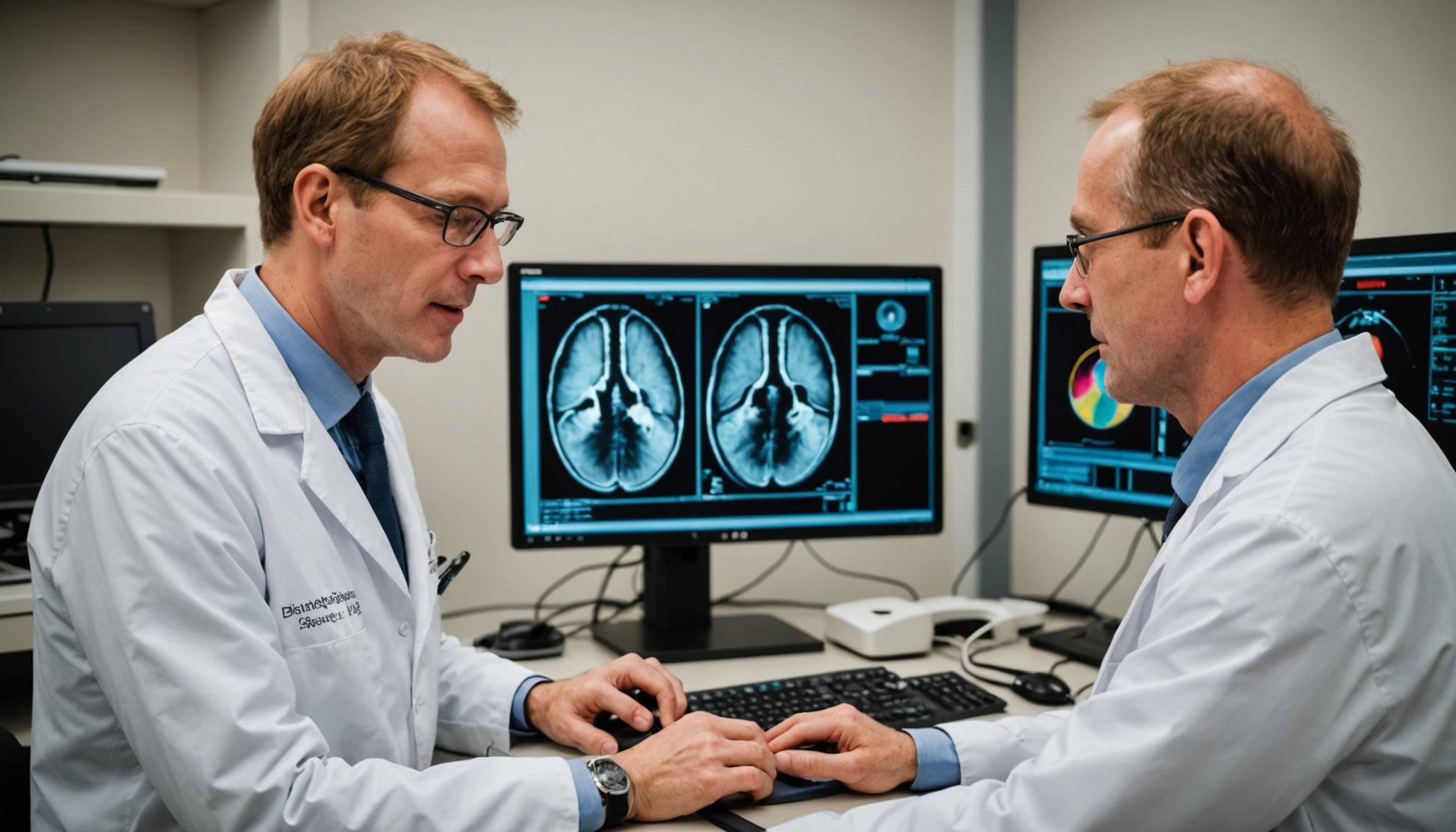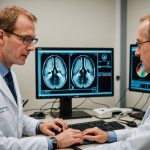Overview of Early Cancer Detection Techniques
In the realm of oncology, the significance of early cancer diagnosis cannot be overstated. Detecting cancer at an initial stage dramatically enhances treatment outcomes and patient survival rates. Traditional imaging methods, such as X-rays and ultrasounds, have laid the groundwork for modern cancer diagnosis. However, these methods come with limitations, such as reduced sensitivity to small lesions and inability to capture metabolic activity. As the medical community seeks greater diagnostic precision, the field has seen a notable shift towards advanced imaging methods.
Transitioning towards modern techniques, oncologists lean heavily on advancements in imaging technology to bridge these gaps. Advanced imaging methods, such as MRI and CT scans, offer improved resolution and functional imaging capabilities, allowing for a more comprehensive assessment of tumours. UK radiologists have been at the forefront, advocating for these innovations as they enhance the ability to diagnose and treat various cancers at an early stage.
This might interest you : Top Non-Surgical Strategies for UK Cardiologists in Managing Aortic Dissection: Best Practices Unveiled
As these imaging techniques evolve, they promise not only to improve diagnostic accuracy but also to refine radiation safety and patient comfort. This evolution within early cancer diagnosis reflects a broader trend towards precision medicine, which seeks to tailor healthcare more personally and effectively.
MRI Innovations in Oncology
Within the realm of cancer imaging, MRI technology has emerged as a significant tool to enhance diagnostic precision. Its ability to deliver detailed images without radiation makes it especially valuable in complex cases.
Also to read : Exploring Innovative Techniques in Peritoneal Dialysis by Leading UK Nephrologists
Advanced MRI Techniques
Modern advancements in high-resolution imaging have transformed MRI capabilities, enabling the detection of minute tissue abnormalities with greater clarity. Functional MRI, in particular, allows oncologists to assess physiological changes in tissues, offering insights into tumor behaviour.
Case Studies Utilizing MRI
Several studies have underscored the efficacy of MRI technology in early cancer detection. In particular, cases involving MRI have successfully pinpointed minute breast and brain tumors, facilitating timely intervention. Statistical analyses indicate improved survival rates linked to early detections, showcasing the pivotal role of MRI in clinical settings.
Expert Opinions on MRI Usage
Leading UK radiologists emphasize MRI’s versatility and non-invasive nature. They predict that the continued evolution of MRI will further enhance its role in oncology. Innovations in imaging sequences and contrast agents are expected, improving diagnostic accuracy. These improvements solidify MRI as an indispensable tool in the landscape of cancer imaging. As oncologists continue to rely on advanced techniques, the integration of MRI technology into standard practice highlights the strides made towards more personalized and effective healthcare.
The Role of CT Scans in Early Cancer Diagnosis
In the evolving landscape of cancer diagnosis, CT imaging plays a pivotal role in advancing early detection techniques. It has become an essential tool due to its ability to provide detailed cross-sectional images of the body, assisting in comprehensive evaluations of tumours. Recent technological strides have significantly improved CT efficiency, fostering a balance between diagnostic precision and patient safety.
Technological Advancements in CT Scans
One of the noteworthy developments is the adoption of low-dose CT techniques, which significantly reduce radiation exposure while maintaining image quality. This advancement reassures patients worried about radiation-related risks, enhancing the reliability of frequent screenings. Additionally, 3D imaging capabilities allow for detailed analysis of tumour volumes and structures, offering an insightful picture of cancer progression. Such techniques provide accurate assessments and are becoming integral in routine cancer screening programs.
Effectiveness of CT Scans in Specific Cancers
CT imaging has proven especially effective in detecting lung and colorectal cancers. Extensive usage statistics reveal its superior ability to identify early-stage indications of these cancers compared to traditional methods. Comparative studies underscore its efficacy, showcasing higher detection rates and improved patient outcomes, hence reinforcing its standing as a primary imaging choice in oncological practices.
PET Scans and Their Impact
In the evolving field of oncology, PET imaging stands out, enhancing the diagnostic process for early cancer detection and metastasis identification. PET scans excel in visualising metabolic activity within cells, providing a unique insight that complements other imaging techniques. This ability renders PET imaging crucial in identifying both primary tumours and secondary sites of cancer spread, elevating its importance in comprehensive cancer diagnostics.
How PET Scans Enhance Diagnostic Accuracy
PET imaging is highly effective due to its ability to detect in-depth metabolic changes that often precede anatomical changes visible in CT or MRI. This feature allows for the identification of tumours at an earlier stage, significantly improving diagnostic accuracy. When integrated with CT or MRI, PET scans provide a more holistic view, refining the precision of cancer assessments. The combination of anatomical and functional data ensures a robust understanding of tumour biology.
Recent Advances in PET Technology
Innovations such as hybrid imaging systems, which merge PET with other imaging modalities, represent a significant leap forward. These systems offer enhanced specificity and accuracy in detection. Advances in radiotracers have also improved the specificity of PET scans, allowing for more targeted evaluation of cancerous activity, which is pivotal in tailoring effective treatment plans.
Comparative Analysis of Imaging Techniques
In the complex field of oncology, comparing diverse imaging modalities is crucial to enhancing diagnosis. Each modality—MRI, CT scans, and PET scans—offers distinct advantages. MRI excels in high-resolution cancer imaging without involving radiation, making it ideal for visualising soft tissues. In comparison, CT imaging provides clear cross-sectional images crucial for assessing complicated anatomical structures while effectively managing radiation doses for safety. PET imaging is unique for its metabolic insights, providing early detection of metastasis through visualizing cellular activity.
When examining efficacy, CT scans often lead in quickly diagnosing prevalent cancers such as lung or colorectal, demonstrating high diagnostic precision. However, the cost-effectiveness of each modality may vary, with MRI generally being costlier. Patient outcomes also differ—MRI and PET scans often contribute to more accurate early diagnostics, which correlates with better treatment options.
The systematic review of these imaging techniques involves evaluating outcomes from oncological studies, ensuring optimal use in practice. As healthcare continues to innovate, these comparisons highlight the importance of integrating multiple techniques for comprehensive early cancer diagnosis, elevating future practice standards in oncology imaging.
The Future of Imaging in Cancer Diagnosis
In the ever-evolving field of oncology, future trends in imaging are poised to revolutionize patient care. Key technological advancements are ushering in a new era of diagnostic precision.
Emerging Imaging Technologies
AI and machine learning are transformative forces in imaging. These technologies enable enhanced data analysis and image interpretation, promising faster and more accurate diagnoses. Additionally, next-generation imaging platforms are in development, which are expected to offer unprecedented resolution and functionality, potentially identifying cancerous changes earlier than current technologies allow.
Holistic Approaches to Early Detection
Integrating imaging with biomarkers and genetic testing is gaining traction. This multi-pronged approach enhances early detection efforts by combining traditional imaging with cutting-edge diagnostic tools, offering a more comprehensive analysis. Multi-disciplinary collaboration between radiologists, oncologists, and researchers is essential, facilitating innovative solutions in cancer diagnosis.
Predictions for the Next Decade
The next decade anticipates significant advancements in imaging technologies. Such progress is expected to improve patient outcomes by enabling tailored treatments. Continuous research and adaptability in radiology will be crucial to fully harness these innovations, ensuring that healthcare innovation persists, ultimately enhancing the efficacy of early cancer diagnosis.











